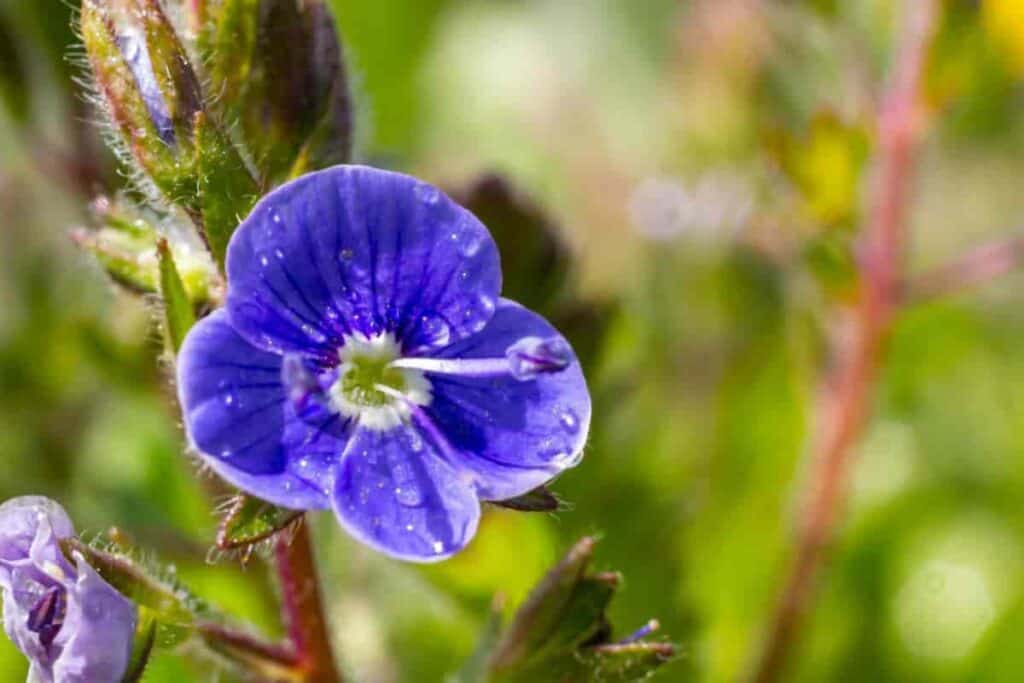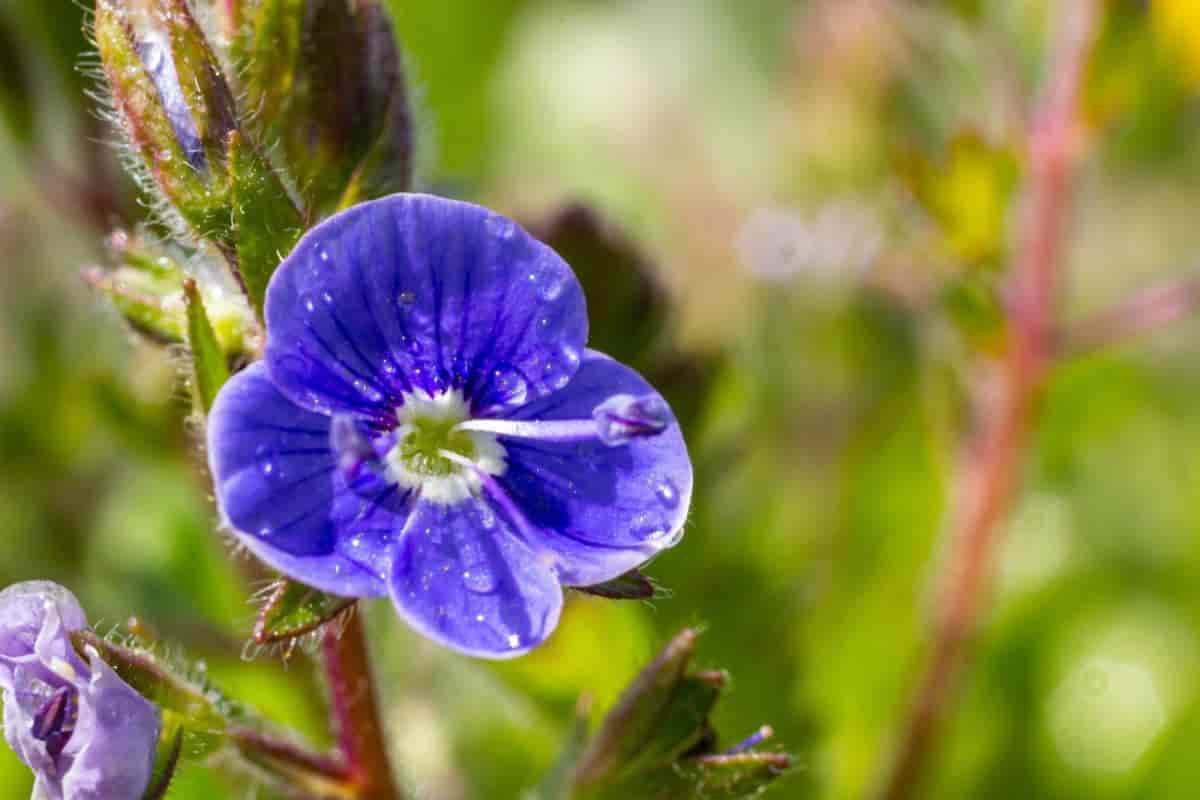Blue in the garden spreads a cooling reflection of the sky wherever it appears. But good garden blues are rare.

There are many purple flowers or those of a rosy hue, but the narrow spectrum that can honestly be called blue has comparatively few representatives among summer flowers.
Two Blue Veronicas
Veronicas are predominantly blue and come in a great variety of sizes and forms, many making fine spike flowers, often with nodding tops.
Veronica spicata usually grows fairly low, under 18″ inches. Though pink and white kinds are found, intense pale blue is customary. Plants form bold mats of foliage and flowers.
Veronica incana, with gray foliage, blooms similarly. Both flower for several weeks in early to mid-summer.
The gray-blue foliage of English lavender (Lavandula officinalis) adds to the bluing effect of this small aromatic shrub.
It bears purple-blue spikes all summer. ‘Hid-cote’ is one of the deepest varieties bordering on purple. It makes an admirable low hedge or a subtle accent on a border of perennials.
Indigo from Baptisia
Baptisia furnishes indigo flowers early in the season, blooming after irises and peonies. The blooms look like small sweet peas except that they are solid smooth blue at the ends of tall stems.
A well-established plant forms a four-foot bush that lasts seemingly forever with no plagues or pests. Foliage is lupine-like; attractive all season. The botanical name: B. australis.
Bellflowers or Campanulas
The good blue color comes from many of the bellflowers or campanulas. The harebell (C. rotundifolia) has gracefully nodding cups on threadlike stalks.
Taller but biennial is the Canterbury bell with cup-and-saucer or hose-in-hose flowers usually blue, sometimes white, pink, or purple.
The peach leaf campanula, too, reaches 2’ or 3’ feet in height, with usually blue flowers at the tops of stems.
Carpathian harebell (C. carpatica) makes a wide cushion covered with cuplike blue flowers.
Exotic Lily of Nile
The exotic lily of the Nile (Agapanthus) gives dramatic blue color. It grows from a bulb-like root that is tender in harsh winters.
If you live where you hesitate to grow it outdoors (as in places where winter temperature goes below 10° degrees Fahrenheit) you can have it nevertheless in tubs that you store in the garage, or you can dig the roots and keep them over winter in a cool basement.
Variety mooreanus is said to be the hardest. Plant it in spring in warm soil, being careful not to break the brittle roots.
Sages That Reflect the Sky
Do not overlook the salvias. One of the most handsome blue kinds is S. patens, sometimes called gentian sage, which is perennial but not always hardy. However, it seeds itself generously and is easy to keep.
Another true blue coloring is Pitcher’s salvia, with large flowers that match the sky. These sages bloom on upright spikes 30” to 48” inches high, from midsummer usually until frost.
Choices For Blue Perennials
Echinops or globe thistle ‘Tap-low Blue,’ Chinese delphinium, eryngium or sea holly, stokesia, perennial blue flax (Linum perenne), leadwort (Ceratostigma plumbaginoides), the davidiana bush clematis and tall blue lobelia (L. siphilitica) are other choices for perennial flowers that are definitely in the blue range.
The leadwort, in particular, makes a lavish gentian blue display in August and September and is beautifully placed near pink or lavender hardy asters. Put it where you can curb its spreading tendencies.
Annuals for Azure Hue
If you like to grow annuals, you can choose from several blue kinds. Phacelia campanularia, the California bluebell, prefers to grow and bloom right where the seed falls.
Sow it in warm soil in spring. Showy bellflowers sit atop eight-inch clumps of foliage.
For other annuals, try love-in-a-mist (Nigella), Chinese forget-me-not (Cynoglossum), browallia, and the blue edging lobelias.
For a blanket of azure over a fence or wall, nothing surpasses the ‘Heavenly Blue’ winning morning glory in late summer and fall.
44659 by Rachel Snyder
